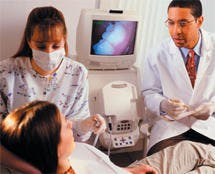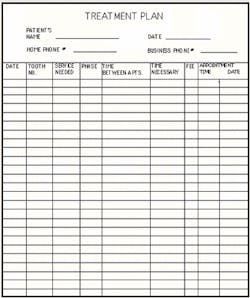Case presentation: The fulcrum of your practice
People buy what they want long before they buy what they need. Your ultimate challenge: Helping people want what you believe they need.
by Cathy Jameson, PhD
Case presentations are the fulcrum of your practice. It doesn't matter how well you perform dentistry, or how well you make a financial arrangement, or schedule an appointment. Patients must first decide that they want the treatment .
People buy what they want long before they buy what they need. Your ultimate challenge: Helping people want what you believe they need. How you present your recommendations makes all the difference.
PlanSpend time planning an individual's case: study your diagnostic data, determine a plan of action that benefits the patient optimally, and organize your presentation.Yes, I am suggesting that you invest time and attention in planning a case prior to presenting it. Consider setting time aside for planning. It may be some of the most valuable time you spend each week.
Remember that case presentation is a sales transaction. You are involved in an exchange of value: the patient receives the value of the dental care you perform for which you receive financial compensation. This exchange of value is a part of every patient interaction.
As you prepare for your presentation, remember that your patient likely knows nothing about dentistry. Let me reiterate that using patient-friendly language is essential. Tape record yourself someday and see how many times you use language that may be foreign to a dental novice. Or, have someone listen to you make a presentation and to make note of all the things they didn't understand.
Classic presentation skills — whether for a presentation to a group or to an individual — are based on three guidelines:
Introduction: Tell them what you are going to tell them.
Case presentation: Tell them what you are there to tell them.
Summary: Restate what you have just told them.
The key to learning is repetition. Therefore, you must be ready to repeat. It's OK to do this. In fact, it is essential. Remember, the person you are presenting to knows nothing about dentistry. Repetition intensifies a patient's ability to understand. You may grow weary of saying some things over and over. After all, there are just so many things you can say about dental situations. Just remember that while you may have stated something hundreds of times, it's the patient's first time to hear any of it. Repetition is the key to learning. With case presentations, patients are there to learn: 1) What's going on in their mouths, 2). what you recommend as their optimum treatment, and 3). what that treatment will mean to them.
PresentThe attention span of an adult during a presentation situation is about 17 minutes. In other words, you don't have much time to get the patient's attention, make your presentation, identify and overcome objections, and close. If you lose patients during case presentations, it is quite difficult to recapture their attention. You must stay in control of the situation.Don't get too technical. Don't go into too much detail. Don't do too much talking. You can actually listen your way to case acceptance. Listening may be the most important communicative tool that you will use during a case presentation.
The goal is to have the patient say "yes" to your recommendations. No matter how well you present the case, if the patient does not go ahead with treatment, you've failed. "Closing the sale" begins from the very start; proceeding with treatment should be the goal of every action.
Here are four critical factors to incorporate into your presentation:
1. Stay in control of a situation by asking questions and listening. By asking questions, you identify motivators and objections. Vary your questions. Ask questions that keep patients involved and keep them thinking about how your recommendations will benefit them.
2. Identify objections by asking questions. Don't be afraid of objections. They are the steps necessary to the close. If you never know what may be getting in the way of treatment acceptance, you will never have a chance to handle the objection.
The first step is to identify the objection. Once the problem has been identified, you can begin to work on possible solutions. Don't get defensive. If patients present an objection, know that they are interested in your proposal — they just have some things to work out. On the other hand, if they never present an objection, they may not be interested at all. So, an objection is, in reality, a gift.
Don't be afraid of objections. Once you identify patients most frequent objections, you can develop effective responses.
3. Work on your style. Choose your words carefully; avoid those that turn people off. Ask someone not involved in dentistry to evaluate your language. This individual can tell you if a word is a turn-off, and if it's understandable and interesting. Be creative. Use pictures to support your presentation.
In addition, be aware of your body language. Approximately 60 percent of a message's perception — whether you are sending or receiving — is body language. Be well-dressed and well-groomed. Be alert. Lean slightly toward the person. When you want a patient to look at your visual aid (such as the computer monitor where visual images may be appearing), you should look in that direction as well. When you want to make a point, stop and look at the patient. All attention will focus in your direction.
Another 30 percent of a message's perception is the tone of voice. Practice speaking. Is your voice monotone, or is it interesting, dynamic, and convincing? If you come across as bored and uninterested, your patients will follow suit. If you don't make this treatment seem interesting and relevant, your patients won't think so, either.
4. Involve as many of the senses as possible. However, there is no more intensely important sense to stimulate than the sense of sight.
Figure 1 — This treatment plan sheet is but one example of how dentists can better organize their case preparation.
Visual aids will help you get and maintain attention, move quickly through the presentation, and stay in control of your demonstration. Gather visual aids that support the kind of dentistry you provide: books, brochures, before-and-after photography, patient-education systems, and/or digital photography. Take intraoral or digital photographs as part of the initial information gathering process. Store these so that you can retrieve them during your presentation.
The most powerful visual aid is giving patients the opportunity to see their own mouths. If you are storing all of your images, you can show a patient before-and-after photographs of similar cases to give them a true understanding of what you are talking about. They can see the benefits and the end results of the treatment you are recommending, and you can provide proof that you can create the results you are describing: features, benefits, and proof.
Features: Visual aids show people examples of your dentistry. Remember, most people know nothing about dentistry. For instance, when you say "crown" you must not assume that the other person knows what you are talking about. Use visual aids to help them understand. If all you do is talk, only 11 percent of learning is accessed.
Start taking before-and-after images of all your cases now. Start a portfolio of these images so that you can refer to them. As you prepare for your case presentation, think about a case that is similar to the new case. You will want patients to relate to similar situations so that they can begin to understand what you can do for them.
Benefits: Patients must grasp the benefits of the treatment you are recommending. All behavior and all decisions are based on "what's in this for me." When you are preparing for your presentation, and you have selected a similar situation to show the patient, be thinking of how to relate this similar situation to the patient's current condition.
For example, "Mrs. Jones, Patient X had a situation similar to yours — a tooth that was fractured much like yours. Can you see the similarity? Once we restored her tooth to health with a porcelain crown, she looked like this. What do you think?"
It is critical to have examples of all the kinds of dentistry you provide. Don't ask patients to relate to something that is totally different from their situation. It's confusing, and a confused person can't make a decision. Using an unrelated example also sends the message that the patient isn't important enough for you to tailor your presentation specifically.
Proof: People often base their decisions about future activity on the past. In dentistry, people will have a limited amount of information and/or experience on which to base their decision. So, give them information. Show them before-and-after photographs of similar situations so that they can see what you have achieved for other patients. This will give potential patients more confidence in their decisions. Plus, it will give them confidence in your ability to create the results you are describing.
You certainly can use professionally produced photo albums. These are better than no visual aid at all. However, there is nothing that will be more effective than showing your own dentistry — giving proof that you can produce excellent results.
The following is a letter that my dentist/husband, Dr. John Jameson, received from an elderly (approximately 75 years old) female patient:
"Dear Dr. Jameson,
Thank you for your good work on my teeth. The care you took from the start was very reassuring. I was particularly impressed with the "imaging" that showed pictures of my mouth — it was like looking down in my own mouth to see what needed to be done. This technique gives one confidence in what you plan to do to restore teeth.
Also, when you began working, I appreciated your telling me beforehand what you were going to do so that I could be prepared, not shocked at the procedure.
Your competent hands and steady work put me at ease and I did not dread each visit. Your helpers were very considerate, too, and this makes for greater comfort.
I am happy with the porcelain veneers on my front teeth. Although they cost a pretty penny, they restored my teeth and make me feel like they look natural, so I can go on with my life without feeling self-conscious about getting old."
Do not underestimate the value of visual aids.
The fulcrum of your practice is your case presentation. Everything springboards from this critical system. Focus on your case-presentation skills and make a commitment to continually improve those skills. Learn to ask questions and listen. Learn to use visual aids in your presentations. Learn how to identify objections and then be prepared to handle those objections.
There is more dentistry sitting in your charts waiting to be done than you could probably ever do in the rest of your career. Get the dentistry out of the charts and into the mouths of your patients by making case presentation the main focus of your practice.
Effective patient education
How can a busy practice educate patients efficiently and effectively? Some of the most successful practices can show patients a professional presentation at the touch of a button. How much time does it take? None, really.
The doctor or team member can press the button...
- ... as the new patient's x-rays are being developed (maybe a segment on periodontal therapy or one on cosmetic dentistry)...
- ... as the hygiene patient awaits the doctor for the exam (perhaps on a condition the hygienist noted during his or her exam)...
- ... as the emergency patient awaits treatment (maybe about endodontics).
The new DVD format changes everything. Videos are great, but they can also be boring. They usually go into more detail than a patient needs. On DVD, the patient gets brief, interactive presentations that give just enough information. They get exactly what they're interested in, and in a very short time. Remember, there's only so much that a patient wants to know.
We don't just think you'll like the CAESY Patient Education System — we know you'll like it. We confidently recommend it to all of our clients, because it covers bread-and-butter dentistry topics like endo and perio every bit as beautifully and concisely as it covers the possibilities of cosmetic dentistry. It will fit the way you practice.








